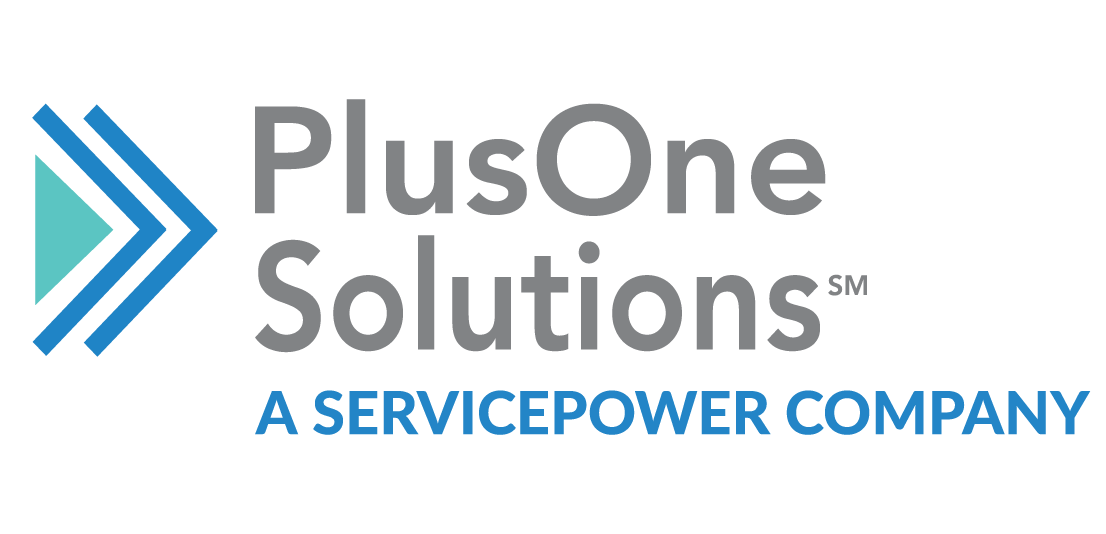Understanding what qualifies as a safety-sensitive position is critical for organizations committed to compliance and employee well-being. These roles carry heightened responsibilities and risks, meaning even minor lapses in performance can result in serious consequences.
This guide outlines the definition, legal framework, and best practices for managing safety-sensitive positions—helping HR leaders, compliance officers, and business owners create safer, more accountable workplaces.
What Is a Safety-Sensitive Position: Definition and Compliance
A safety-sensitive position definition typically refers to any job in which an employee’s performance can directly impact their own safety and the safety of others. These roles are common in industries like transportation, healthcare, construction, and manufacturing, where errors can lead to serious harm or fatal incidents.
But what does safety-sensitive position mean beyond general risk? It encompasses any role that involves operating machinery, handling hazardous materials, working at heights, or performing tasks that require a clear, unimpaired mind. A safety-sensitive role demands absolute vigilance and judgment at all times. These jobs often include commercial vehicle drivers, equipment operators, and healthcare professionals who administer medication or perform procedures where patient safety is at stake.
Identifying these roles is critical; misclassification can expose businesses to regulatory violations or workplace accidents. OSHA and the Department of Transportation (DOT) set clear expectations for employers to define safety-sensitive functions, enforce testing protocols, and ensure compliance. Additionally, businesses in aviation, public transit, and energy sectors must also comply with industry-specific guidance.
Key compliance standards include maintaining a written policy for identifying sensitive positions, outlining testing procedures, and training supervisory staff on recognizing signs of impairment. Many organizations also use a compliance checklist for safety-sensitive positions to remain aligned with the latest regulatory updates on safety-sensitive jobs. These checklists often include elements such as role descriptions, substance screening frequency, return-to-duty policies, and documentation standards.
Legal Obligations for Safety-Sensitive Roles
Employers are legally required to implement policies that uphold workplace safety for safety-sensitive occupations. The DOT mandates regular drug testing and alcohol testing for employees in such roles, especially in the transportation sector. These testing requirements are not optional, and they apply during pre-employment, post-accident, return-to-duty, and random screening scenarios to ensure ongoing fitness for duty.
Under federal law, roles defined as safety-sensitive must be documented in official job descriptions. Employers must ensure that employees are informed of their legal obligations for safety-sensitive roles, which includes being subject to reasonable suspicion testing. This also means employers must understand the thresholds for suspicion and have protocols in place for how and when to initiate testing.
Workplace safety regulations also require employers to take steps to mitigate risks posed by controlled substance use. Employers must maintain records of test results, report violations, and enforce consequences consistently. Documentation must be kept secure and confidential but must also be made available for audits and compliance checks. A failure to follow these documentation protocols can compromise investigations, reduce legal defensibility, and impact the organization’s ability to meet insurance or contractual obligations.
Occupational health and safety laws at the state and federal level further define these obligations. Compliance standards include fit-for-duty assessments, health screenings, and incident reporting. For organizations operating across multiple states, this can require a coordinated approach to ensure uniform standards while meeting localized rules. Employers must also navigate varying definitions of safety-sensitive roles between jurisdictions, which may affect how testing policies, recordkeeping, and employee notices are structured.
Failure to meet safety compliance standards can lead to fines, legal liability, and reputational damage. Employers must be proactive in managing safety-sensitive position risk factors, including mental fatigue, ergonomic strain, and improper use of tools or vehicles. Some businesses also partner with external legal or compliance experts to perform annual policy audits. Ultimately, maintaining compliance requires a proactive and layered approach—integrating legal guidance, up-to-date training, and ongoing policy refinement to protect both employees and the organization.
Implementing Safety Management Systems
A formal safety management system (SMS) provides the structure needed to reduce risks in workplaces with safety-sensitive job requirements. SMS models include procedures for hazard identification, incident tracking, corrective actions, and performance monitoring.
Core elements of effective systems include:
- Policy development that defines safety objectives and responsibilities
- Risk assessments tailored to safety-sensitive positions
- Employee safety training focused on awareness and prevention
- Continuous monitoring and improvement mechanisms
By integrating these elements, companies can support both compliance and a culture of accountability. Implementing a system also ensures better coordination between departments like HR, safety, and compliance. Cross-functional alignment improves communication, streamlines reporting, and ensures that safety protocols are embedded into every stage of the employee lifecycle—from onboarding to ongoing performance reviews.
In some industries, such as oil and gas or aviation, an SMS may also include environmental risk assessments and controls related to physical site security. Digital dashboards and analytics tools are increasingly being used to help track safety metrics and generate insights from historical data. When fully implemented, a robust SMS not only reduces incidents but also builds a measurable framework for continuous safety and compliance improvement across all levels of the organization.
Building a Strong Safety Culture in Organizations
A strong safety culture in organizations promotes shared values, behaviors, and practices that prioritize health and well-being; this is especially crucial for teams centered around safety-sensitive occupations.
Companies that prioritize employee wellness programs and effective safety training programs consistently outperform peers in reducing incidents. This is often reflected in lower workers’ compensation claims, reduced absenteeism, and greater retention rates among employees in high-risk roles.
A strong culture includes:
- Transparent communication of safety policies
- Active leadership involvement in safety decisions
- Regular training refreshers tailored for high-risk roles
- Peer-to-peer accountability systems
Organizations can also boost engagement by including employees in safety audits, wellness planning, and job-specific policy creation. These efforts empower sensitive employees and build trust across the organization. When employees feel heard and included in safety planning, they are more likely to report hazards, comply with procedures, and advocate for best practices among peers.
Culture can also be measured through regular surveys, anonymous feedback tools, and exit interviews to understand gaps in perception versus reality. Recognition programs for safe behaviors and milestone tracking (such as injury-free days) can help reinforce priorities. Cultural indicators can be benchmarked over time to track improvement and highlight areas where additional support or training may be needed.
Safety Audits and Inspections for Compliance
Routine safety audits and inspections are essential tools for identifying risks and ensuring that safety-sensitive position definition standards are being met. These assessments evaluate everything from safety procedures and signage to personal protective equipment (PPE) usage and training adequacy.
To conduct effective audits:
- Use standardized checklists that incorporate workplace safety regulations
- Engage third-party inspectors or cross-functional teams
- Document findings and assign responsibility for corrective action
- Track progress through digital tools or management software
For managing hazardous environments, audits help reveal gaps that may lead to injury or non-compliance. Inspections should be conducted quarterly at minimum, with more frequent reviews in high-risk sectors. These reviews are especially critical in dynamic environments where tasks, equipment, or personnel frequently change—such as construction sites, labs, and logistics centers.
Many organizations also use mock audits to prepare for regulatory inspections, identifying issues before external agencies do. The audit process should include employee interviews and observation of task execution to fully understand frontline practices. When performed thoroughly and regularly, audits not only identify risks but also validate that the organization’s safety strategies are effectively protecting employees in safety-sensitive roles.
Employee Wellness Programs and Safety-Sensitive Positions
Employee wellness directly impacts job performance, especially in safety-sensitive positions where physical and mental alertness is critical. Employers that offer employee wellness programs focused on sleep, stress, and substance abuse prevention can significantly reduce safety incidents.
Best-in-class programs include:
- Mental health support services and counseling
- Fitness and nutrition resources to improve resilience
- Fatigue management education for shift workers
- Customized training for safety-sensitive roles
Tailoring wellness programs to the demands of safety-sensitive job requirements ensures that initiatives are both effective and appreciated. These programs also complement efforts to strengthen safety culture and compliance. They can also reduce the likelihood of impairment-related incidents by addressing root causes like chronic fatigue, unmanaged stress, or burnout—factors that may not be evident in standard screenings.
It’s also important to gather feedback from participants to refine offerings over time. Employers might consider incentives for participation, such as reduced insurance premiums or wellness bonuses. Through continued investment in these programs, employers not only promote healthier lifestyles but also demonstrate their commitment to maintaining a safe, sustainable, and high-performing workforce.
Regulatory Updates and Compliance in Safety-Sensitive Jobs
Keeping up with regulatory updates on safety-sensitive jobs is a continuous process. Agencies like OSHA and DOT frequently revise rules around testing, reporting, and role classification. These changes can include expanded testing requirements, updated lists of prohibited substances, and revised criteria for what constitutes a safety-sensitive role under federal or state law.
Strategies for staying compliant:
- Subscribe to regulatory newsletters from OSHA, DOT, and state agencies
- Attend industry webinars focused on safety trends and updates
- Use compliance tracking software that monitors law changes
- Develop internal SOPs for implementing updates quickly
A structured approach helps organizations maintain a current compliance checklist for safety-sensitive positions and avoid penalties. Regularly reviewing these checklists ensures that even subtle changes—such as documentation formats or audit timeframes—are captured and integrated into daily operations.
Designating a compliance officer or regulatory liaison can improve readiness. Many businesses also belong to industry associations that provide timely briefings, benchmark data, and best practice recommendations. Remaining agile and informed is key to ensuring ongoing compliance, particularly in industries where regulatory oversight is high and lapses can result in significant legal or operational setbacks.
Enhancing Safety and Compliance with Trusted Screening Support
Understanding and acting on the definition of a safety-sensitive position is more than a legal obligation; it’s a commitment to employee well-being, risk reduction, and business continuity. Organizations must:
- Clearly define safety-sensitive position definitions in HR documentation
- Enforce consistent policies for background check, drug testing, and alcohol testing
- Conduct safety audits and integrate wellness initiatives
- Stay informed about new workplace safety and compliance requirements
Partnering with a provider like PlusOne Solutions supports this mission. From employment background checks and drug screening solutions to license verification and tracking, PlusOne delivers end-to-end support for managing safety-sensitive positions.
PlusOne also provides COI management and continuous monitoring solutions, giving organizations a real-time view of workforce compliance and credentialing. This comprehensive approach simplifies operations and builds a culture rooted in accountability and care.
Learn more about PlusOne’s compliance support for safety sensitive positions.




